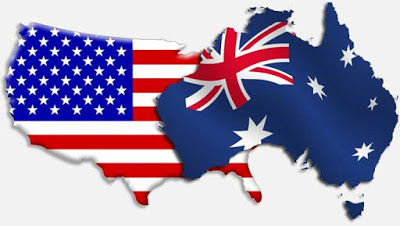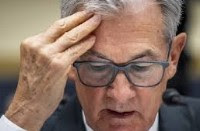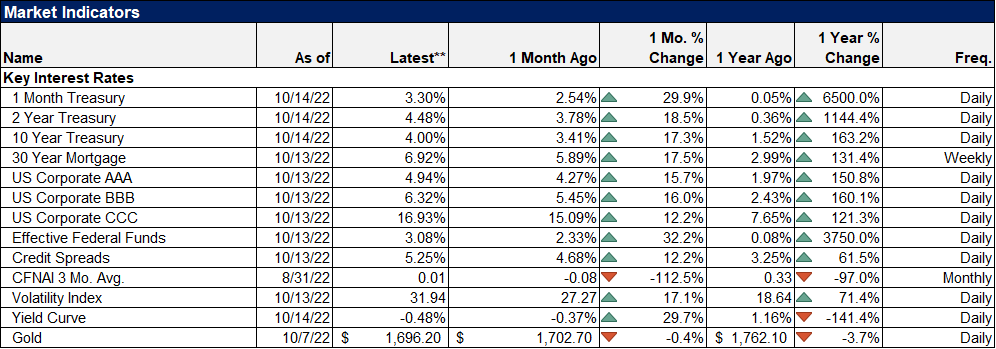 The foreign exchange market is largely quiet as the market awaits fresh trading incentives and the FOMC statement later in the North American session. The main exception to the consolidative tone is the Australian dollar, which is posting its largest loss (~1.7%) in a couple of months.
The foreign exchange market is largely quiet as the market awaits fresh trading incentives and the FOMC statement later in the North American session. The main exception to the consolidative tone is the Australian dollar, which is posting its largest loss (~1.7%) in a couple of months.The short-term market was caught the wrong-footed when Australia reported an unexpected decline in Q1 CPI. The 0.2% decline contrasts to expectations for an increase of the same magnitude. The year-over-year rate fell to 1.3% from 1.7%. Expectations for an unchanged pace. The weighted median and trimmed mean measures also softened. The disappointing inflation data may have distorted by Easter, but the market has moved to price in an increased risk of the central bank to respond with a rate cut, either next week or under the more favored scenario in early June.
The Australian dollar has appreciated almost 10% on a trade-weighted basis since the January lows and nearly 15% against the US dollar. The speculators in the futures market have built the largest gross long Australian dollar position in three years. Many market participants look at the net position (two-year high), but it is the gross longs that are the better measure of the potential pressure of the reversal. We have been tracking the deterioration of the Australian dollar’s technical tone and noted that last week’s highs were not confirmed by the technical indicators.
Trend line support is still not seen until closer $0.7475 today, which is also near the lows seen earlier this month. The Australian dollar has seen now bounce in Europe and is pinned near $0.7600. The increased prospects of an RBA rate cut has weighed on the New Zealand dollar.
The Reserve Bank of New Zealand will announce the results of its meeting late in what is the North American afternoon. A rate cut by the RBNZ would surprise in terms of timing as many expect the move to come in June. Earlier today New Zealand reported a smaller than expected March trade surplus that translates into the largest 12-month deficit since 2009.
The euro and sterling are consolidating in relatively narrow ranges at the upper end what was seen yesterday. The news features include as expected Q1 UK GDP. The 0.4% marks a slowing from the 0.6% pace seen in Q4, but the year-over-year pace was steady at 2.1%. The eurozone’s M3 money supply growth was also as expected at a 5% year-over-year pace.
More importantly, the lending figures continue to hold up. March loans to households maintained their 1.6% pace. Loans to households grew by nine billion euros in adjusted terms in March. Loans to businesses are increased by 1.1% year-over-year, slightly faster than the 1.0% pace in February. A caveat is that in monthly terms, loans to businesses rose by one billion euros after a 19 bln gain in February.
Asian equities responded to the disappointing Apple earnings and extended their decline for the fourth session. Apple reported its first decline in sales in a decade. It follows disappointing earnings from two other tech giants, Alphabet, and Microsoft. Nomura posted its first loss in four years, and there were several other earnings disappointments in Japan. European markets are mixed, but several companies reported better earnings, including Adidas, Barclays, Nordea, and Norway’s largest oil company. The S&P 500 is off about a 0.25% near midday in London.
The unexpected fall in API’s estimate of US oil inventories is helping to keep oil underpinned and sending it to new five-month highs. Nevertheless, the bond markets are rallying. The main exceptions are Japanese government bonds and Greek government bonds. The US 10-year Treasury note yield has risen for seven sessions coming into today. It is the longest such streak in a few years. It is at risk today. The market seems reluctant to push the yield above 2% without additional incentive.
The FOMC statement is the North American highlight, though the March trade balance will allow economists a last minute opportunity to adjust forecasts for the Q1 GDP. The first estimate will be reported tomorrow. The FOMC statement will likely recognize the preliminary improvement in the global climate but also the soft patch in the US economy. However, it may still regard the global situation as fragile and look through the soft patch. To say it is data dependent is banal.
Investors are looking for some insight into the June meeting, when three-quarters of economists, according to a recent Wall Street Journal survey, expect a hike. We do not expect the FOMC to take it off the table. Nor can the FOMC make a commitment to it. At the end of the day, the information set investors have may not be substantively changed.
Tags: FOMC,newslettersent,U.K. Gross Domestic Product
































